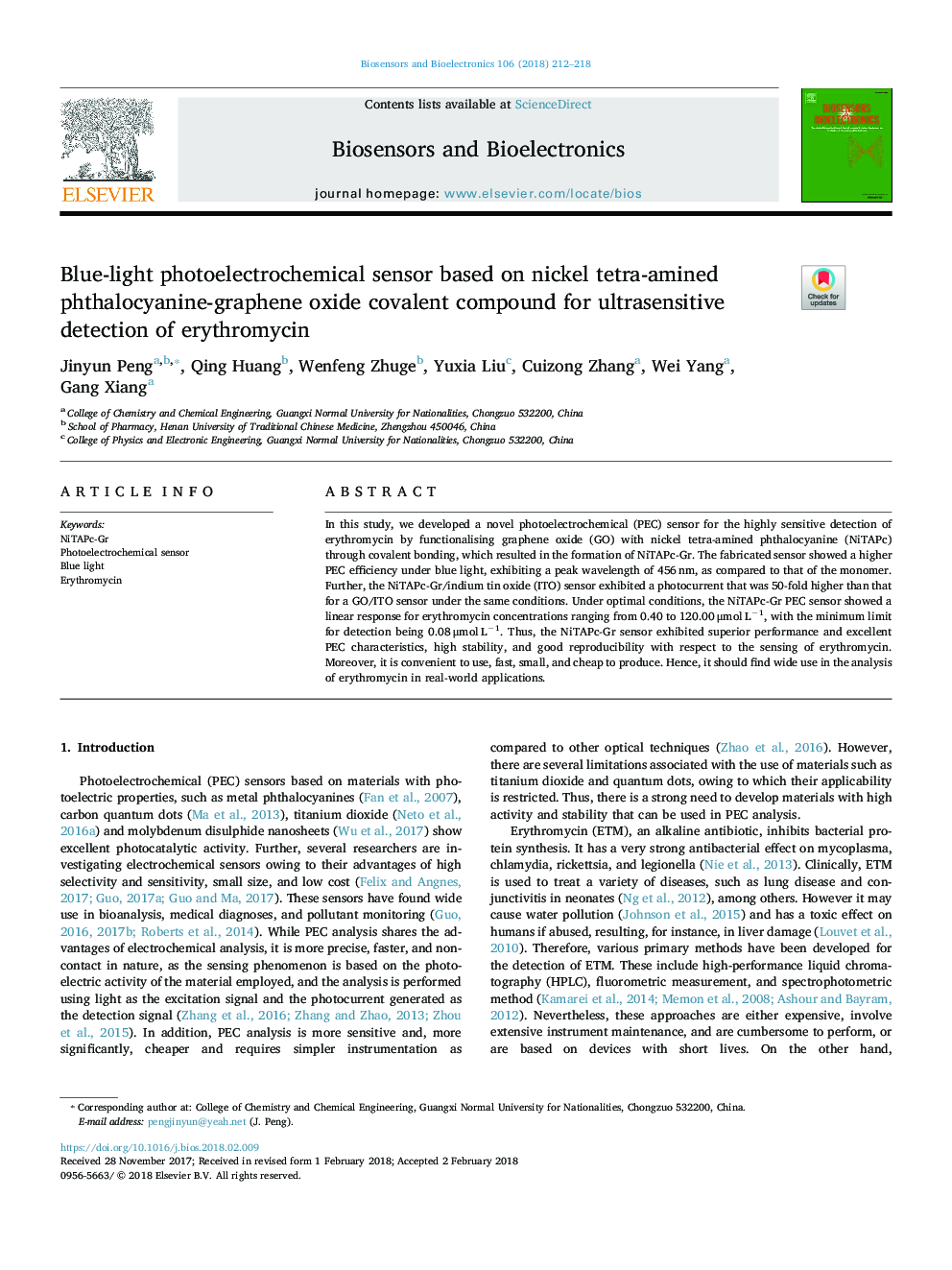| Article ID | Journal | Published Year | Pages | File Type |
|---|---|---|---|---|
| 7229700 | Biosensors and Bioelectronics | 2018 | 7 Pages |
Abstract
In this study, we developed a novel photoelectrochemical (PEC) sensor for the highly sensitive detection of erythromycin by functionalising graphene oxide (GO) with nickel tetra-amined phthalocyanine (NiTAPc) through covalent bonding, which resulted in the formation of NiTAPc-Gr. The fabricated sensor showed a higher PEC efficiency under blue light, exhibiting a peak wavelength of 456â¯nm, as compared to that of the monomer. Further, the NiTAPc-Gr/indium tin oxide (ITO) sensor exhibited a photocurrent that was 50-fold higher than that for a GO/ITO sensor under the same conditions. Under optimal conditions, the NiTAPc-Gr PEC sensor showed a linear response for erythromycin concentrations ranging from 0.40 to 120.00â¯Î¼molâ¯Lâ1, with the minimum limit for detection being 0.08â¯Î¼molâ¯Lâ1. Thus, the NiTAPc-Gr sensor exhibited superior performance and excellent PEC characteristics, high stability, and good reproducibility with respect to the sensing of erythromycin. Moreover, it is convenient to use, fast, small, and cheap to produce. Hence, it should find wide use in the analysis of erythromycin in real-world applications.
Related Topics
Physical Sciences and Engineering
Chemistry
Analytical Chemistry
Authors
Jinyun Peng, Qing Huang, Wenfeng Zhuge, Yuxia Liu, Cuizong Zhang, Wei Yang, Gang Xiang,
